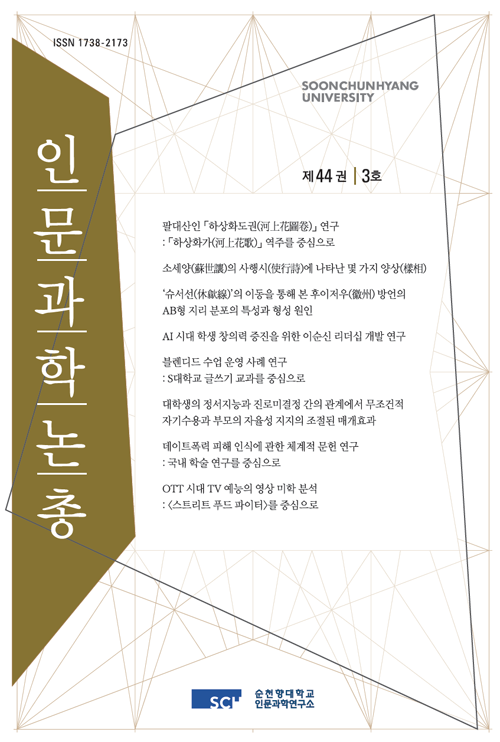‘슈서선(休歙線)’의 이동을 통해 본 후이저우(徽州) 방언의 AB형 지리 분포의 특성과 형성 원인
An Analysis of the AB-type Geolinguistic Distribution in the Huizhou Dialect: With a Focus on the Shift of the Xiushe Line(休歙線)
- 순천향대학교 인문학연구소
- 순천향 인문과학논총
- 44권 3호
-
2025.0973 - 103 (31 pages)
-
DOI : https://doi.org/10.35222/IHSU.2025.44.3.73
- 0

후이저우(徽州) 방언에는 일부 어형(語形) 및 음운 형태가 뚜렷한 AB형 인접 분포 양상을 보이는 사례가 관찰된다. 본고에서는 후이저우 방언 내에서 ‘扶·胡’와 ‘猴’의 성모(聲母) 음운 형태를 분석 대상으로 삼고, 아울러 <달>, <잠두>, <어제>를 의미하는 어형들의 지리적 분포도를 함께 상세히 고찰하였다. 분석 결과, 후이저우 방언의 AB형 지리 분포는 대체로 ‘슈서선(休歙線)’을 기준으로 양분되어 있으며, 일부 항목은 이 선을 경계로 동서 방향에서 일정한 편차를 보이는 것으로 나타났다. 본고의 논의에 따르면, 이러한 AB형 지리적 분포의 형성은 해당 어형이나 음운 형태가 난징(南京) ·항저우(杭州)를 중심으로 한 장화이관화(江淮官話)에서 우세하게 자리 잡았기 때문이다. 이러한 우세한 형태가 빈번한 언어 접촉을 통해 ‘비화(飛火) 전파’ 방식으로 후이저우 슈서선 동쪽 지역으로 확산되었다고 판단된다.
There are some words in the Huizhou dialect whose lexical forms or phonetic forms exhibit a clear AB-type contiguous distribution. This article presents the geographical distribution maps of the phonetic forms of the initial consonants of ‘fu· hu(扶·胡)’ and ‘hou(猴)’ and the synonymous forms of <moon>, <peas>, <yesterday> in the Huizhou dialect. It is found that the geographical distribution line of the AB-type in the Huizhou dialect approximately locates on Xiushe line(休歙線), with some lexical forms showing certain deviations in the east-west direction of the line. Through analysis, we believe that the reason for this phenomenon is that the relevant lexical forms or phonetic forms are dominant in the Jianghuai Mandarin dialect, represented by Nanjing and Yangzhou. These dominant forms have scattered to the areas east to the Xiushe line in Huizhou through frequent language contact.
Ⅰ. 들어가는 말
Ⅱ. 후이저우 방언의 AB형 지리 분포
Ⅲ. 후이저우 방언에 나타나는 AB형 지리 분포의 형성 원인
Ⅳ. 나오는 말
참고문헌
(0)
(0)